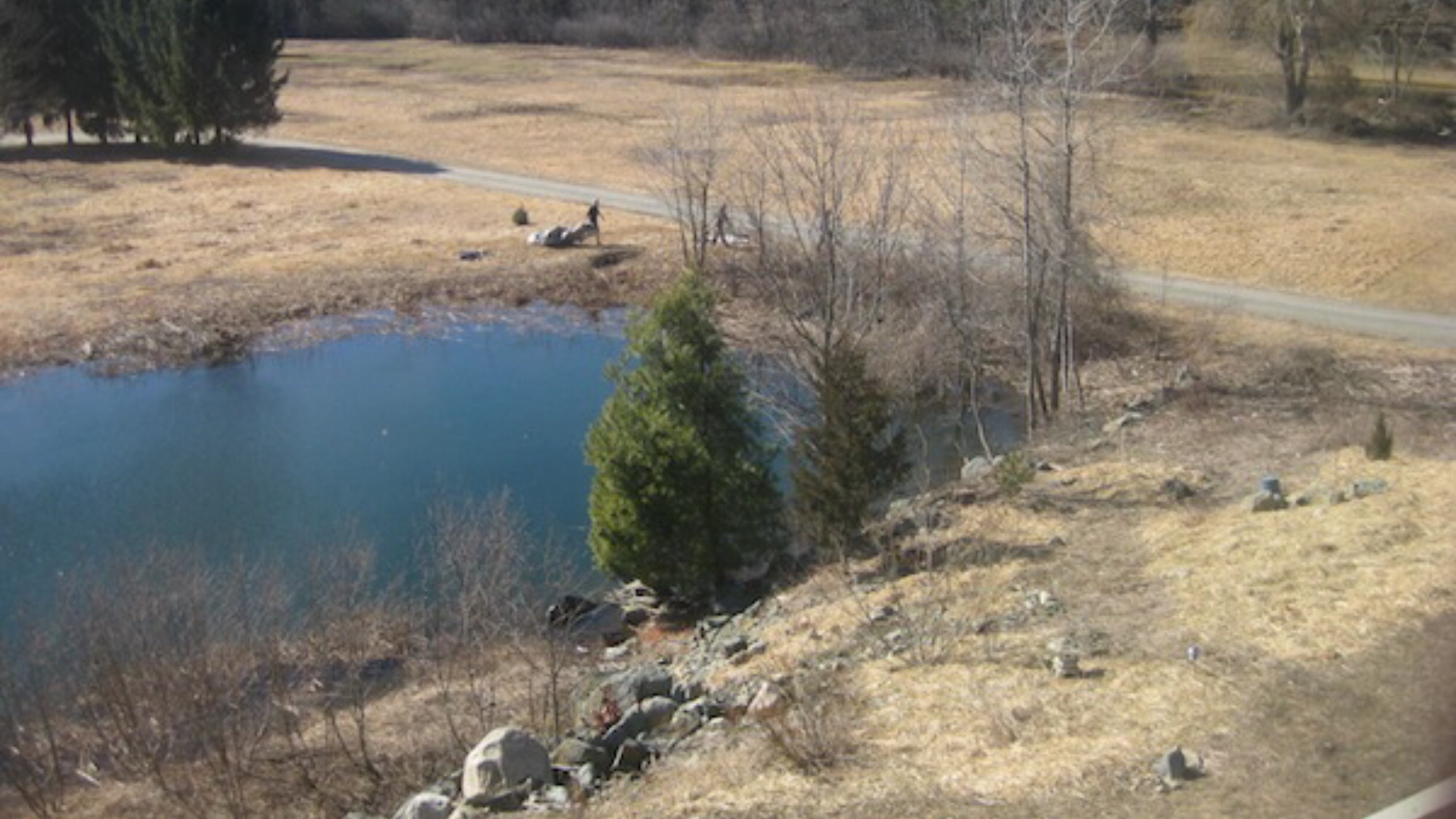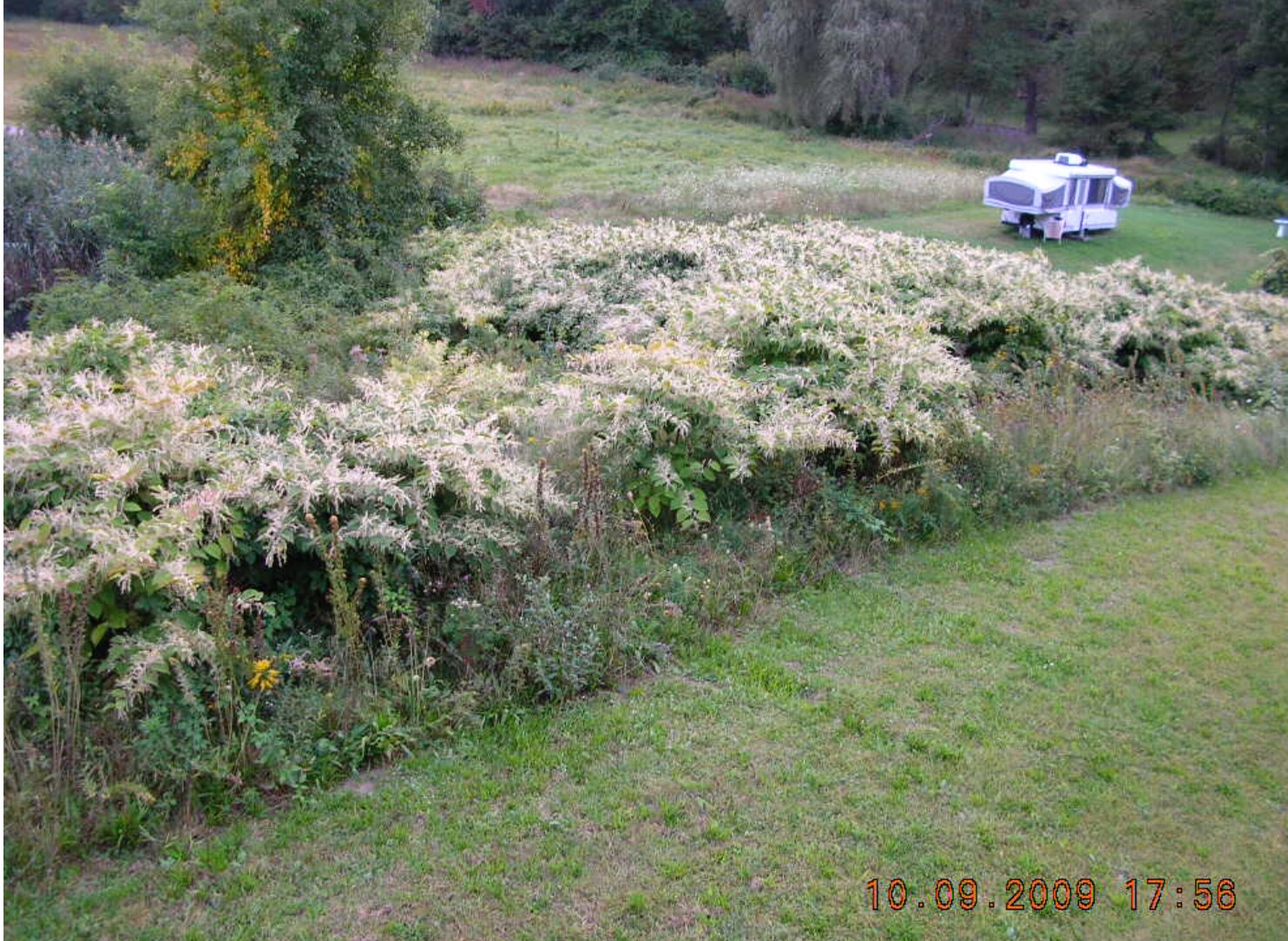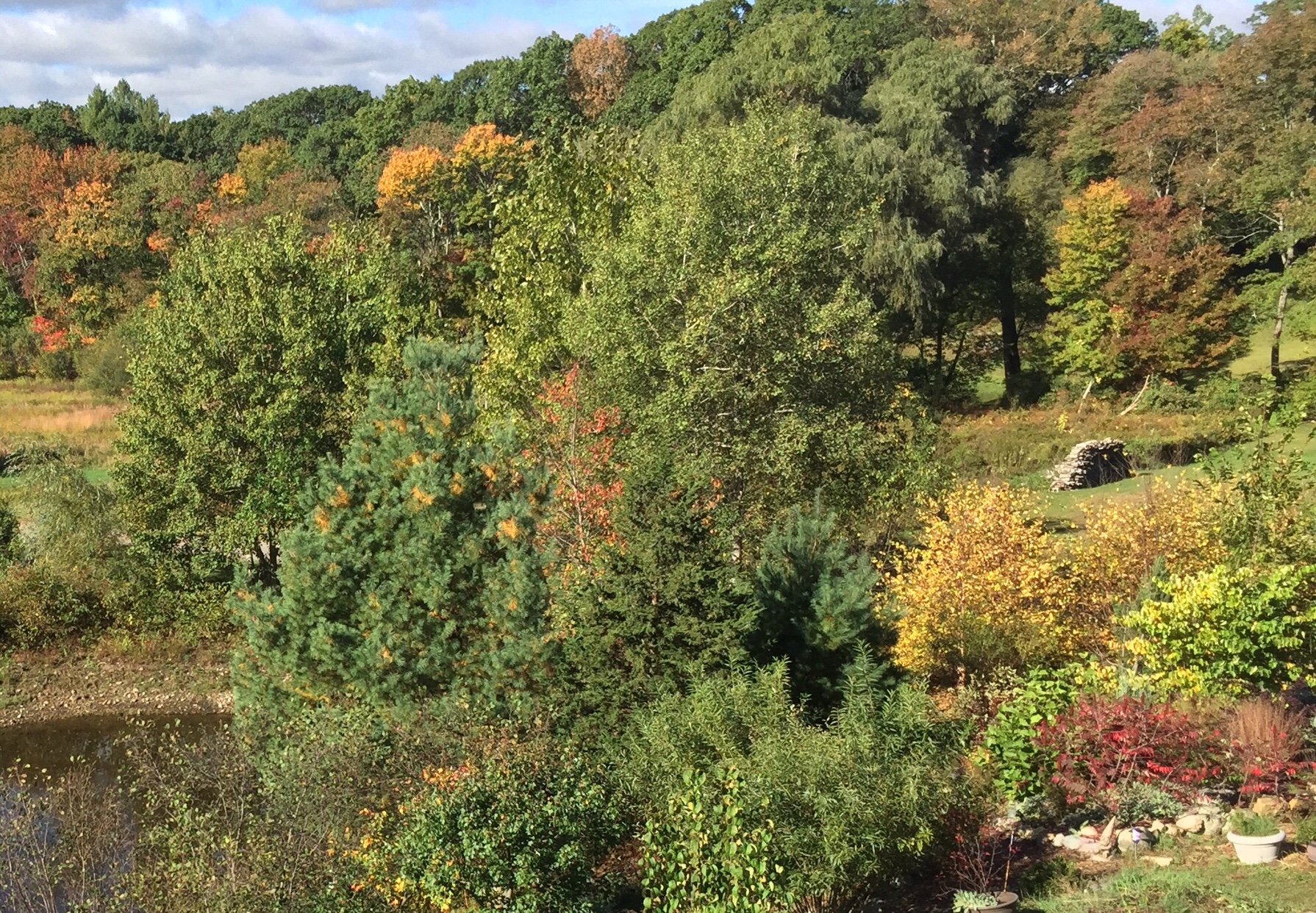What the west side of the pond looked like in February of 2012!

What the west side of the pond looked like in February of 2012!

Multiflora rose and buckthorn are lurking in this jungle, bittersweet vines are choking out the aspens while knotweed is killing all other shrubs and young trees, October 9, 2009:

This photo was taken October 10, 2017:

Existing native aspen, juniper and pine trees have all grown. Willow, dogwood, magnolia and sumac shrubs are all thriving. Rudbeckia, bluestem, coreopsis, liatris and creepervine are holding their own, close to the ground. All 3 layers greatly minimize knotweed resprouts. Though we still occasionally encounter knotweed, it’s not the most troublesome weed anymore by a long shot.
The three main concerns of invasive plants on this property are:
Phragmites, Common Reed – the grass (it can take over)
Japanese Knotweed patch (the reddish stalks). Our neighbor’s driveway also has a large patch, across the street. Put in a request, because it will need herbicide, and the timing is crucial.
Oriental Bittersweet – They had to show me what this is; at the time, I had no experience with it.
Down next to the pond, they show me an alder (speckled?) which gets about 8 feet high and leggy, they say, but it’s a good plant. Cattails in the pond are good. You can distinguish them from the phragmites because they have a wider leaf. They’re also more graceful; their leaves split away from the stalk lower. The Phragmites is narrow, roundish, grassy. On the far side of the pond is a patch of sensitive fern, a “good” plant.
On the boulder wall, there’s a blackberry type plant (rubus) with thorns; it’s good, but it gets thick. There’s also a grapevine type plant and a red maple, which are okay. Above the biggest rock toward the end where you walk down, there is an invasive honeysuckle. The little grass, sort of round-ish, is rush, it’s okay. There’s some horsetail (equisetum), which is not great, but not terrible.
On the west side of the pond, is an invasive autumn olive, a ginormous old invasive multiflora rose, and obviously, a large area of invasive phragmites (the grass). There are nice aspen, white pine and cedar trees here. Unfortunately, a huge, old bittersweet vine is growing up the aspen and choking it. The aspen is really nice, and there’s some nice blackberry here, too, they say.
I can tell, they’re trying their best to be positive and encouraging!

DECK/GARAGE
Concerning the siting of the garage/deck, it looks like we’re keeping pretty much the same footprint, except if the foundation extends out to where the end of the deck is now, instead of just where the blacktop ends now. And even then, it at least looks like we’re definitely 50 feet away from the wetlands, which is the absolute minimum, which is good. But they really like to see 100 or 70 feet, because 50 feet is just the buffer zone.
They explained, a wetlands person can be a good advocate for you, to assist with the permitting process for the immediate goals for the deck/garage, form an overall assessment and plan for the pond’s restoration, and prioritize what should be done there and how. During the permitting process, it may come down to if you’re pouring a foundation that extends right up to that 50 foot mark, or further, it can be mitigated by doing some wetlands planting and/or restoration.
Other than its site, one of the main concerns with the actual construction of the garage/deck is with water runoff and treatment of storm water runoff, so there’s not one source of water coming off of it. They would also like to see a natural exterior and no chemicals used. I’m heartened to agree with what they say, and relieved to discover we’re on the same page. It’s fascinating to find out the identify of some plants in this jungle!
Fortunately, I also know a trombone player who also happens to be a wetlands person.

About a year after we moved in, I phoned the local conservation department. I explained how I’d like to restore the pond in our backyard, but felt like I was in over my head. Seriously. My former garden had been a postage stamp, easy to keep healthy. Here, things were much bigger, and our new town had a very respectable conservation department. Among other things, I wanted to make sure it was okay to plant things like willows and Clethra, which brought the response, “Well, that certainly sounds reasonable!”
I mentioned how we were aware, when we purchased the house the year before, that we’d have to renovate the entire thing, including its precariously-built exterior deck (a large i-beam held up one whole side of it)! We’d knew we’d have to deal with “the yard,” a sloping area between the house and pond, and a large infestation of knotweed. And the tall, invasive grasses taking over the pond were downright scary. I didn’t even know what they were. My years of “gardening” had not prepared me for this.
I needed advice, opinions, any help I could get. The conservation department responded quickly, in less than a week. Two people, the Director of the Department of Conservation and a Board Member/Co-Chair, stopped by to look at it that Friday at 1 pm.
